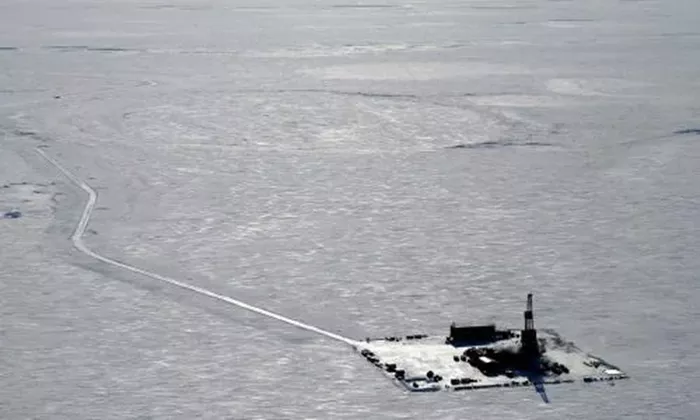The U.S. Department of the Interior announced Monday a proposed rollback of a Biden-era ban on oil and gas drilling across the 23-million-acre National Petroleum Reserve-Alaska (NPR-A), a vast and ecologically sensitive region on Alaska’s North Slope. The reserve, home to diverse wildlife including threatened polar bears, caribou, and migratory birds, has been under protection following a 2024 rule restricting fossil fuel development.
Interior Secretary Doug Burgum stated that a comprehensive legal and policy review concluded the current restrictions exceed the authority granted to the Bureau of Land Management (BLM) under the Naval Petroleum Reserves Production Act of 1976. According to the department’s press release, the 2024 regulation imposes “unnecessary barriers to responsible energy development” and conflicts with the law’s intent to promote domestic energy security.
Burgum, alongside Energy Secretary Chris Wright and EPA Administrator Lee Zeldin, traveled to Alaska this week to participate in events including a sustainable energy conference hosted by Governor Mike Dunleavy in Anchorage. Republican Senator Dan Sullivan of Alaska criticized the Biden administration’s restrictions as “the most egregious effort” to limit oil and gas development in the NPR-A.
“The National Petroleum Reserve in Alaska was set aside to support America’s energy security through responsible development,” Burgum said. “The 2024 rule prioritized obstruction over production and undermines our ability to harness domestic resources at a time when American energy independence is critical.”
Environmental organizations and Indigenous groups swiftly condemned the proposed rollback. Kristen Miller, executive director of the Alaska Wilderness League, called the move a threat to wildlife, local communities, and the climate, accusing the government of bowing to extractive industry pressures. Grandmothers Growing Goodness, an Iñupiat group representing Arctic Indigenous peoples, highlighted that repealing protections would significantly impact the Teshekpuk Lake area, an essential habitat for the Teshekpuk caribou herd and a key subsistence area for Indigenous hunting, fishing, and gathering.
The NPR-A, located approximately 600 miles north of Anchorage and bordered by the Beaufort and Chukchi Seas, is the largest remaining tract of public land in the United States. Initially established as a military fuel reserve in the early 20th century, Congress opened it to commercial development in 1976 but mandated wildlife protection and conservation as priorities.
Marlee Goska, an Alaska attorney with the Center for Biological Diversity, warned that reversing protections risks severe damage to the fragile Arctic ecosystem, home to species such as caribou, polar bears, and belugas. “Turning this precious place into a fossil fuel extraction site is shortsighted and threatens the unique wilderness that defines Alaska,” she said.
The debate over drilling in Alaska occurs amid mounting concerns about climate change. Alaska’s temperature is rising two to three times faster than the global average, accelerating the melting of sea ice and thawing permafrost, which releases stored carbon into the atmosphere. Fossil fuel emissions remain the largest contributor to the global climate crisis.
President Donald Trump’s administration previously declared a “national energy emergency,” aggressively promoting fossil fuel extraction under the slogan “drill, baby, drill.” Despite these efforts, proposed lease auctions, such as the recent one in the Arctic National Wildlife Refuge, have struggled to attract bidders.
Matt Jackson, Alaska state senior manager with The Wilderness Society, warned, “This move will accelerate the climate crisis at a time when the ground beneath Alaska communities is literally melting away and subsistence foods are in decline.”
The Interior Department’s proposal to rescind the 2024 drilling restrictions in the NPR-A marks a significant policy shift, sparking intense debate between energy development advocates and environmental and Indigenous groups determined to protect Alaska’s fragile Arctic landscape.


